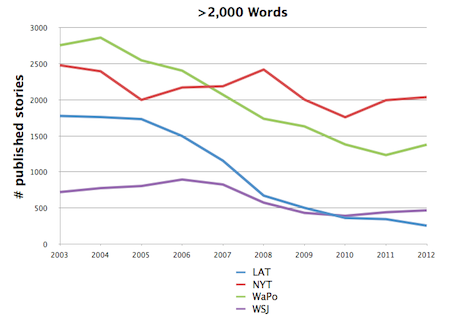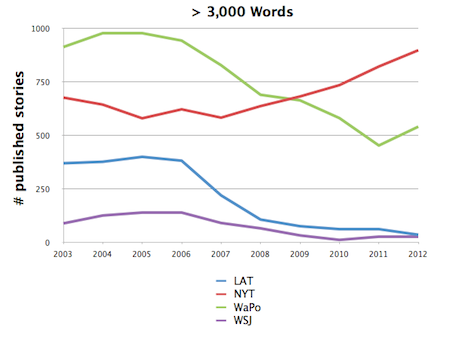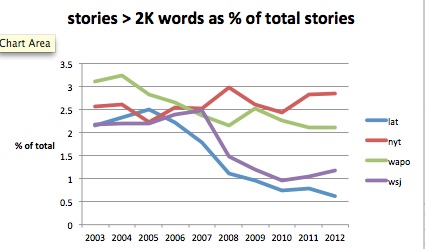The Internet has a content problem. Every day more and more content is being pushed out into the nether regions (ok, that’s inappropriate) of the Internet and most of it is terrible. And worse than that, the good content that is published on the Internet is few and far between and hard to find.
My goal with this blog is to help people get their content found. Because of this I’ve written posts like:
11 Ways To Drive Gobs Of Traffic To Your Site
A Blog Is Not A Content Strategy
Linkbait Is Not A Content Strategy
The Future of Cross Platform Publishing
We’re being inundated with a lot of crap content as well these days. Every post I see on Inbound.org (so basically all content produced by “marketers”) is “How To…”, “X Reasons That…”, “The Ultimate Guide To…”
This kind of content is getting tired and boring. In other non-marketing spaces, we have content that is a bit more interesting -
The 24 Hour Guide To
Three Perfect Days In…
Here’s an example of Time’s “10 Things To Do In London”, which appeared when I searched [24 hour guide to london]:
While this is better than most, and they have a pretty comprehensive city guide with places to stay, information about souvenirs and even photography, it’s still not great or exhaustive by any means. Why am I going to trust it or link to it, other than that it’s Time? The BBC travel section is even worse, because it shows one small stock image and then has walls of text with links (not the kind of content I want to see when trying to determine if I should travel there):
The only thing “mini” about this guide is its photos. This kind of content is crap.
Longform content is dying. Sure, there are still a few sites that are holding strong, but you cannot argue with this data:
Changes
I would argue that the winds of change are upon as people are starting to realize that while short content can catch a click, it rarely drives any action or keeps people returning to read more and more. I recently read a post over on Swombat entitled “The Problem With Blogging”, wherein the writer Daniel Tenner says:
There is a fundamental problem with blogs, and with their chronological nature. Blogs fundamentally, naturally, inexorably devalue the content published on them as it ages. It’s inherently harder to find older content, unless it’s pushed forward in front of the reader. It’s accepted that an article written a mere year ago is less worth reading than one writtena few hours ago (note: both are excellent). This is both the strength and weakness of the blogging format.
New Services
I’m heartened because of services like Medium, the latest project of Blogger and Twitter founder Evan Williams, Svbtle from Dustin Curtis, #longreads, and A List Apart.
Medium
Medium exists, as Williams says in his intro post, to:
rethink how online publishing works and build a system optimized for quality, rather than popularity. Where anyone can have a voice but where one has to earn the right to your attention. A system where people work together to make a difference, rather than merely compete for validation and recognition. A world where thought and craftsmanship is rewarded more than knee-jerk reactions.
I have read other places, such as Venturebeat that Medium will provide different ways to display content around themes instead of the content being caught on one site. It’s a blogging ecosystem dedicated to quality (and without the annoying reposts of Tumblr). For example here is an image-based layout in Medium:
One of the most interesting parts of Medium, to me, is that they say the goal is to:
to eliminate the need for bloggers to also be marketers. “We want to help the best ideas and stories have the biggest possible impact,” Williams said in an email. “For the vast majority of people, Medium will have a higher return-on-investment for writing than publishing one’s own blog.” Source
Svbtle
A new blogging platform that is more exclusive than others (and hence may hinder its growth, but may also keep it from going the way of MySpace) is Svbtle from Dustin Curtis. While Svbtle is an exclusive platform, having it thus enables another level of quality control that I hope will push the authors towards producing their best content instead of publishing for the sake of publishing (though sometimes you just need to press Publish).
The Svbtle homepage is interesting because it aggregates the posts from people on the network onto the homepage.
#longreads
One of my favorite sites that I find myself visiting time and time again is Longreads.com. It’s an aggregator site that grabs the links from tweets marked with the #longreads hashtag, like so:
This is a great way to get your content some extra exposure as well. But please, don’t spam Longreads. Posts needs to be over 1500 words to qualify.
Conclusion
When the rubber meets the road, I’m worried that good content isn’t shareable enough. As an SEO, I’ve often been guilty of thinking about what gets links. I also think about what gets shared, because shares often correlate to links and links to rankings and rankings to traffic and traffic to conversions.
I think as a marketer that this is a valuable mindset, but it cannot be our only mindset. You should also ask what you are teaching, who you are seeking to reach and teach valuable information, and how long your content will last.
I think it’s weird that we call content that can live forever “evergreen” content. Except for posts that are responding to current trends (and I try to keep those to a minimum on this site), shouldn’t all content be evergreen? I actually really like how Jon Cooper has done this on his site with his best posts:
What do you think? Has the Internet made content better or worse?









